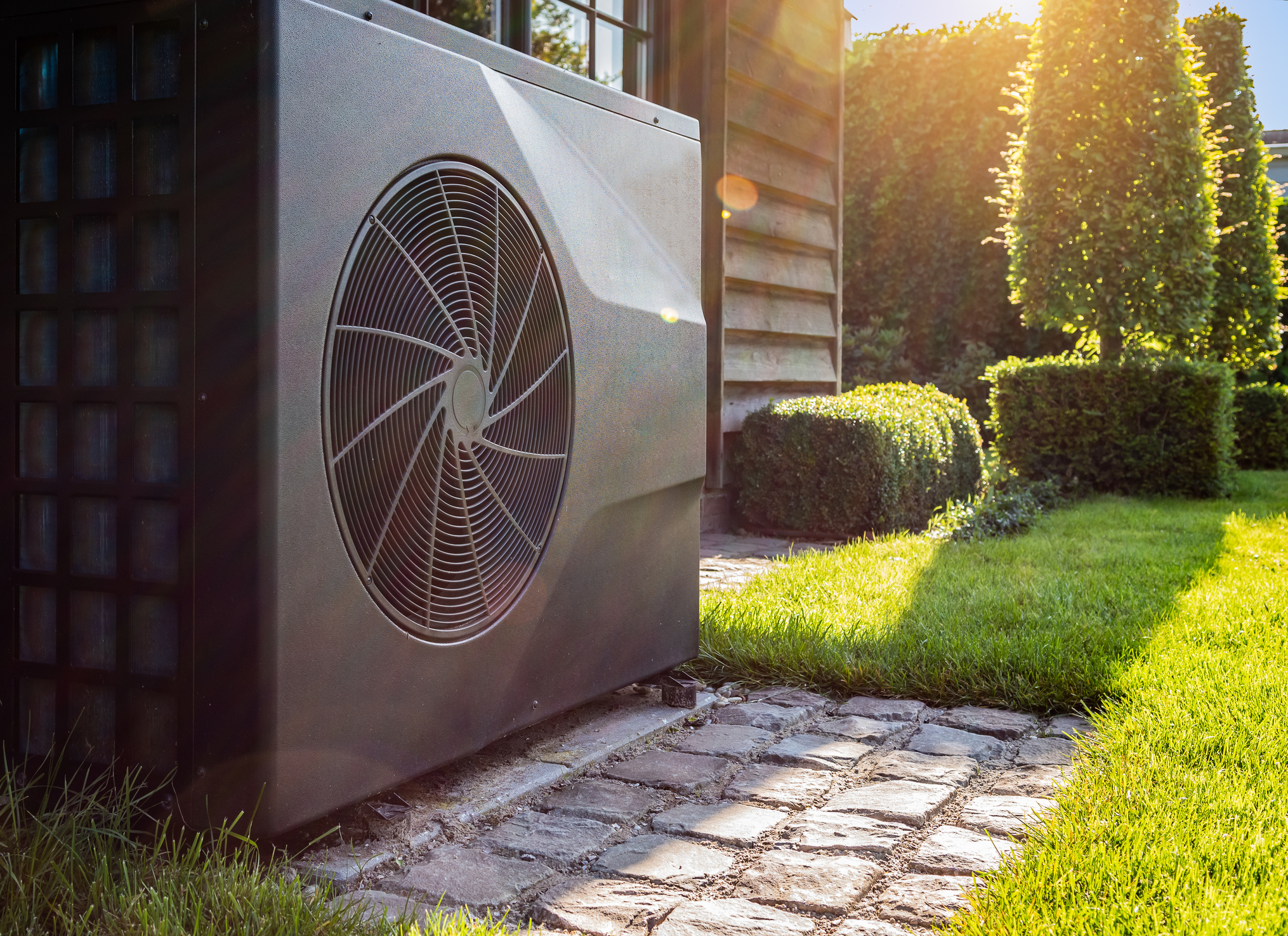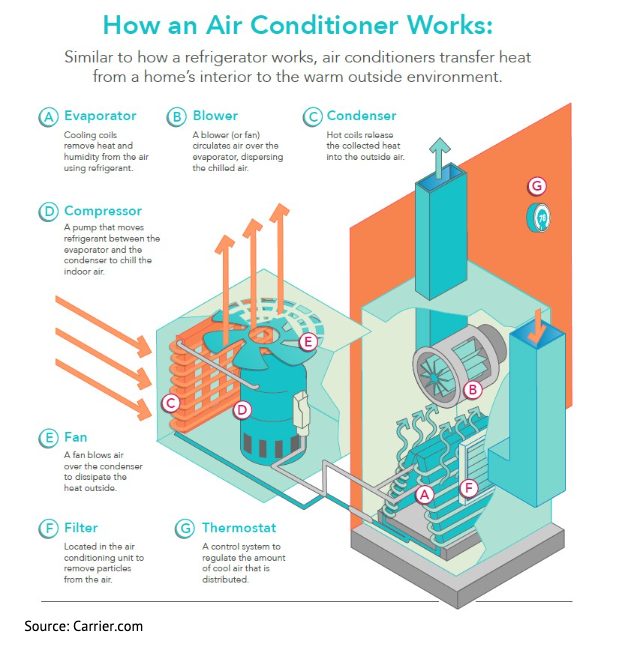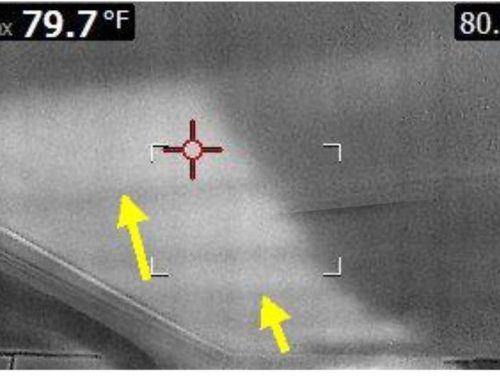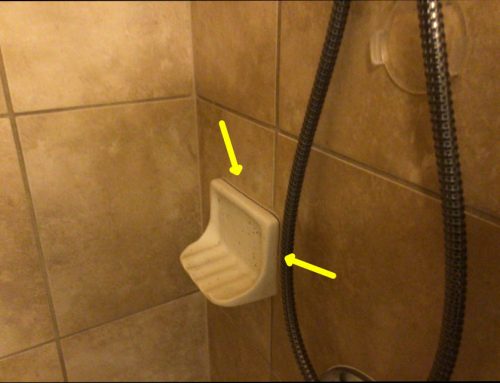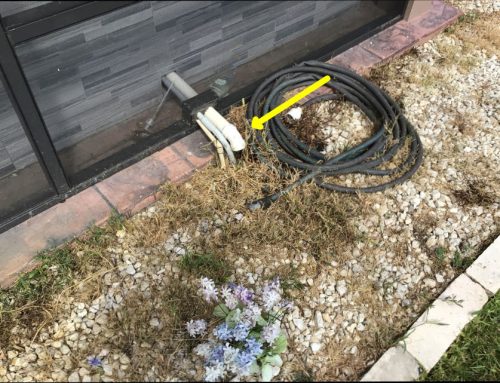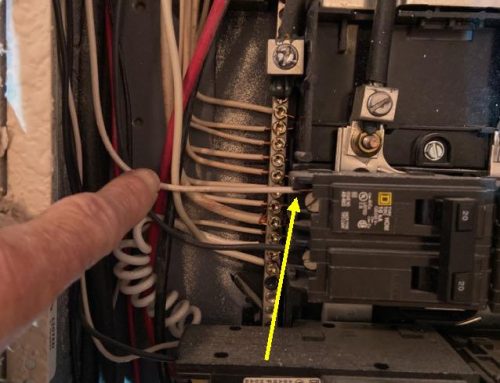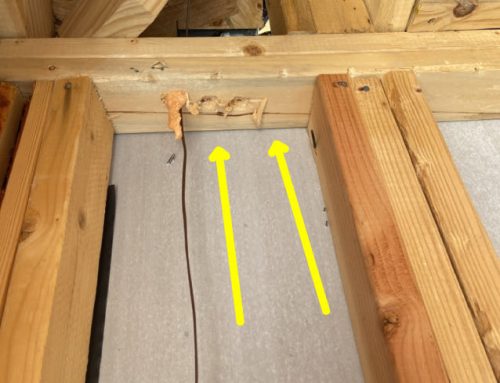Understanding the Home Inspection
Process: A/C Systems
By Texan Inspection CEO Ray Hinsley
On the Texas Gulf Coast, the climate dictates that our homes have properly installed and functioning air conditioning (A/C) systems. Therefore, inspecting the A/C system is a critical part of the home inspection process.
Understanding How An A/C System Works
A/C Components
A typical A/C system, often referred to as “central air” or “split-system air conditioning,” normally includes the following:
- a thermostat that controls system operation
- an outdoor unit that houses a fan, condenser coil and compressor
- an indoor unit (typically either a furnace or fan coil) that houses the evaporator coil and fan to circulate the cooled air
- copper tubing that allows refrigerant to flow between the indoor and outdoor units
- an expansion valve the regulates the amount of refrigerant going into the evaporator coil
- ductwork that allows air to circulate from the indoor unit out to the various living spaces and back to the indoor unit
An A/C system provides cold air inside your home by removing heat and humidity from the indoor air. It returns the cooled air to the home and transfers the unwanted heat and humidity outside.
The A/C Inspection Process
The A/C system uses freon which is a refrigerant, and has three main mechanical components: a compressor, a condenser coil, and an evaporator coil. These components work together to convert the refrigerant from gas to liquid and back again. The compressor raises the pressure and temperature of the refrigerant gas and sends it to the condenser coil where it is converted to a liquid. Then the refrigerant travels back indoors and enters the evaporator coil. Here the liquid refrigerant evaporates and cools the indoor coil. A fan blows indoor air across the cold evaporator coil where the heat inside the home is absorbed into the refrigerant.
The cooled air is then distributed throughout the home via a duct system while the heated evaporated gas is sent back outside to the compressor. The heat is then released into the outdoor air as the refrigerant returns to a liquid state. This cycle continues until your home has reached the desired temperature.
Required Maintenance
The cooling of air across the evaporator coil generates a considerable amount of moisture. This moisture must be captured and drained.
There is a primary drain pan within the unit in which moisture is collected and a primary drain line that is connected into to a sewer drain line. This typically done by connecting the primary drain line below a bathroom sink to drain.
The primary drain line can become clogged over time because of organic growth. If they do become clogged, there is a secondary drain pan located below the unit which is exposed and visible. If the primary drain becomes clogged the water overflows into the secondary drain pan.
The secondary drain line is usually run to the exterior of the home (usually to the roof soffit) where it can be seen dripping to alert the homeowner that they have a problem. When this occurs it is important to call an A/C technician who will use forced air to “blow” the primary line and clear it.
The A/C System Inspection Process
Home inspectors in Texas are licensed and regulated by the Texas Real Estate Commission (TREC). There are specific standards of practice and protocols that are required or prohibited by TREC. All home inspectors in Texas are required to follow these standards.
It is important to remember that these inspections are visual inspections. If a deficiency is identified the home inspector is not allowed to disassemble any components, he can only report it is not installed or operating properly. Only a licensed A/C technician can disassemble or open the unit to identify the problem and suggested repair and cost.
Be very wary of home inspection reports that list repair costs because unless he is also a licensed A/C technician, the home inspector could be only guessing what the problem and the associated repair cost might be. Since these A/C systems are expensive, you could be in for a costly surprise. It the A/C system is not operating properly contact a licensed A/C company to give an accurate evaluation and repair cost.
Two Types of A/C Units
Home inspectors are required to identify what type of A/C unit is present at the home. Is the unit a typical “split system” or is it a heat pump. Once the type of unit is identified and before operating the A/C system, the home inspector must first evaluate whether the components of the A/C system are installed properly.
Let’s separate these components into two groups – indoor and outdoor – and explore the visual inspection checklist for each.
Visual Inspection for Indoor Components (usually located in attic)
- Does the furnace or fan coil that houses the evaporator coil and fan have proper clearances and Is there a walkway so that they can be accessed by service technicians?
- Is the refrigerant piping properly insulated to prevent condensation?
- If the evaporator coil is visible, does it show any damages casings on the coils? Is it excessively dirty?
- Does the primary drain line properly terminate into a sewer line?
- Does the secondary drain pan have water, debris, or rust? Is it properly sloped to drain?
- Does the secondary drain line slope properly to drain?
- Does the secondary drain line terminate outdoors in a visible location?
- Is there damaged ductwork or ductwork insulation? Is the ductwork properly routed?
- Is there gas piping, sewer vents, electrical wiring, or junction boxes present in the duct system, plenum(s), and chase(s)?
- Any damaged grills or registers?
- Is the return air located properly?
- Is there proper air filter present?
- Is the thermostat properly installed?
Visual Inspection for Outdoor Components
- Does the condensing unit have adequate clearances for service access and air circulation? Is it level and above ground elevation?
- If the condenser coil is visible, does it show any damages casings on the coils? Is it excessively dirty?
- Is the exposed refrigerant piping properly insulated to prevent condensation?
- Is there an electrical power shut-off breaker within the line of sight of unit?
Operational A/C Inspection
Once all the components are visually inspected for proper installation, the home inspector can now operate the system to confirm that is functioning properly. Listed below are the key functions that a home inspector observes to determine if the A/C system is functioning properly.
- Does the thermostat properly activate the A/C system?
- Does the blower fan and condensing fan operate? Is there excessive vibration in either unit?
- Is there air flow to all accessible air supply registers within the home?
- Does the A/C system adequately cool the air? This is determined by measuring the temperature of the air when it enters the return air grill and then measuring the air temperature when it exits an air supply register. The home inspector is looking for a 15–20-degree temperature differential between the return air and the supply air to verify that the A/C system is cooling properly.
Actions an Inspector is Not Allowed to Perform
- Program digital thermostats or controls.
- Inspect for pressure of the system refrigerant, type of refrigerant, or refrigerant leaks.
- Inspect winterized evaporative coolers, or humidifiers, dehumidifiers, air purifiers, motorized dampers, electronic air filters, multi-stage controllers, sequencers,
- Operate cooling equipment when the outdoor temperature is less than 60 degrees Fahrenheit.
- Operate setback features on thermostats or controls.
- Operate heat pumps when temperatures may damage equipment.
- Verify compatibility of components, the accuracy of thermostats
- Determine sizing, efficiency, or adequacy of the system.
- Determine uniformity of the supply of conditioned air to the various parts of the structure.
- Determine types of materials contained in insulation.
Home inspections are important for so many reasons. When you are armed with a thorough inspection and have all the facts at your fingertips, you can make informed decisions about your potential home purchase.
Texan Inspection Services is a family-owned business that has provided home inspections to the Houston metro area for 20 years and performed over 40,000 home inspections. We hope that you will consider us for your next home inspection, so please contact us today at 281-342-5762 or click here to schedule an inspection that you can trust to give you all the information you need.
Previous blogs
Understanding the Impact of Modern Building Standards on Older Home Inspections https://www.texaninspection.com/current-standards-older-home-inspections/


